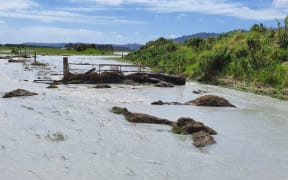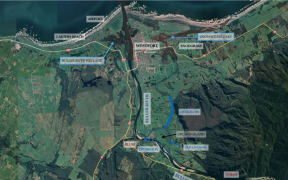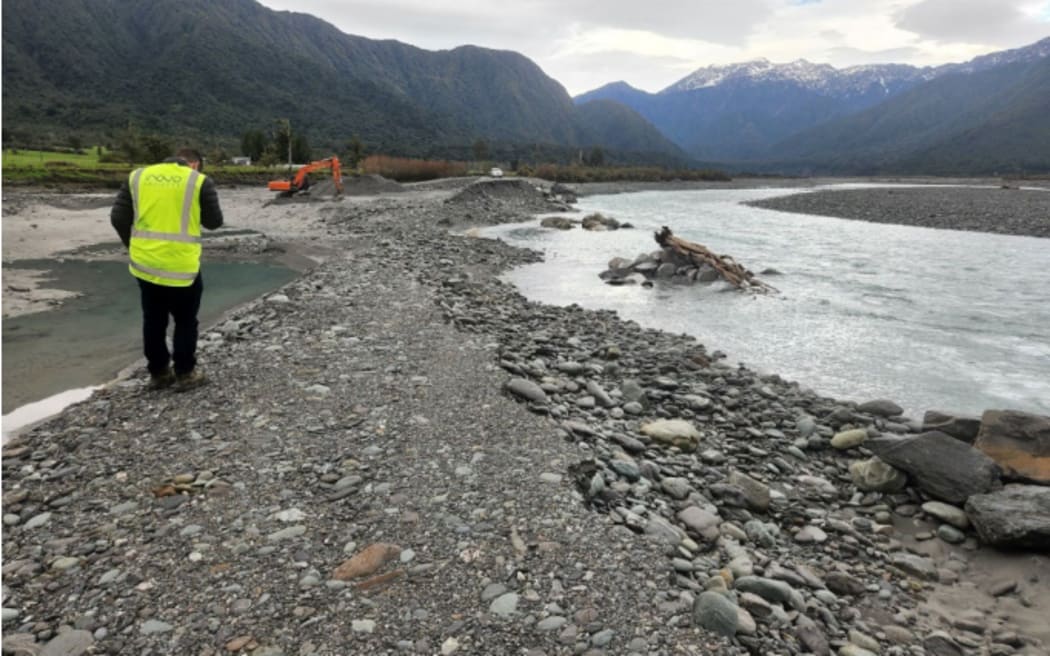
Damaged northern flood protection assets in the Wanganui River rating district following a storm event earlier this year. The district near Hari Hari is awaiting a solution which may be partially Government funded. Photo: LDR / West Coast Regional Council
Storm-damaged infrastructure often involves a multi-agency approach, the West Coast Regional Council says.
But the question of who pays should be pushed up the council's agenda, new councillors say.
Mark McIntyre, of Buller, asked what 'emergency works' actually meant for the council initiating a repair to flood protection works.
A recent operations report to the council meeting noted an application with the National Emergency Management Agency (NEMA) for damage from the February storm.

It caused extensive damage in Northern Buller/Karamea, and in South Westland.
"Staff hope for a favourable response from NEMA shortly," the report said.
Acting planning, innovation and science manager Rachel Vaughan, said the circumstances with a weather event decided the use of either rating district funds, an application to NEMA or investigating other funding options.
Ultimately, the bill always went to the rating district and could be topped up by external funds.
The Resource Management Act allowed certain activities such as stopbank 'maintenance' without a new consent but a new bank or extracting gravel for river training might need a consent, she said.
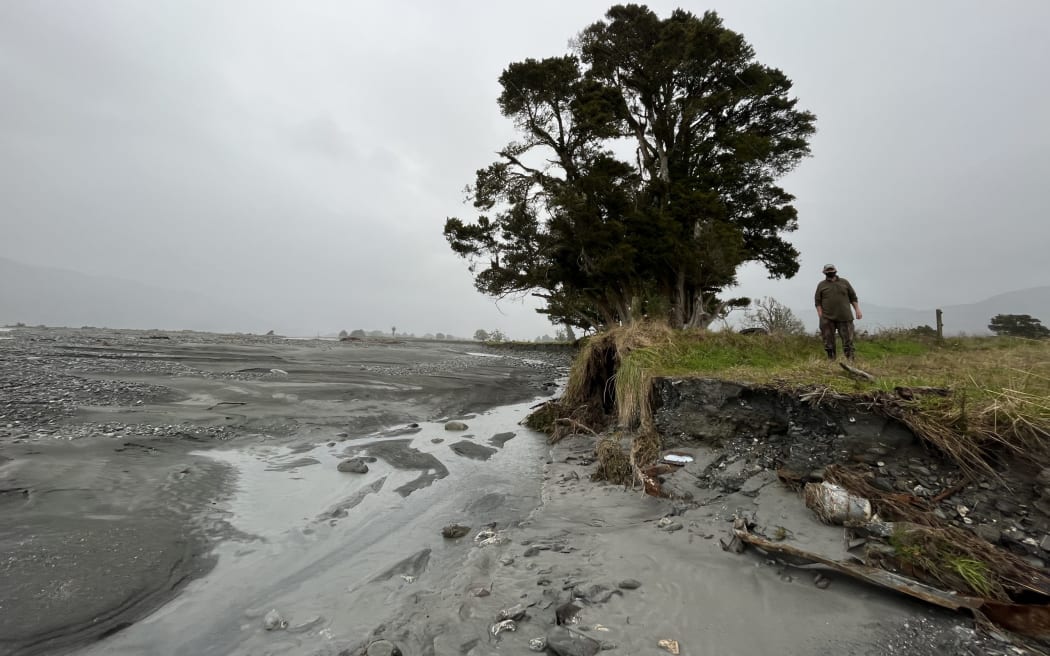
Waiho Flat farmer Richard Molloy atop the crumbling southern bank of the Waiho River in the farming district below Franz Josef which was devastated in the 2019 flood. The area remains in limbo, awaiting a decision on government co-funding for a $24m West Coast Regional Council protection scheme. Photo: LDR / Greymouth Star/Brendon McMahon
While there were emergency provisions for this work, who paid including for consents, had to be worked out.
Frank Dooley asked how the council's insurance provisions fitted into emergency works.
"One of our largest costs is insurance. We're still negotiating with NEMA but no mention of insurance. How does that work?"
Insurance excess costs always had to be weighed in the conversation, Vaughan said.
"What we need to weigh up is what's the best value for money if it goes over the threshold for what is worth claiming for."
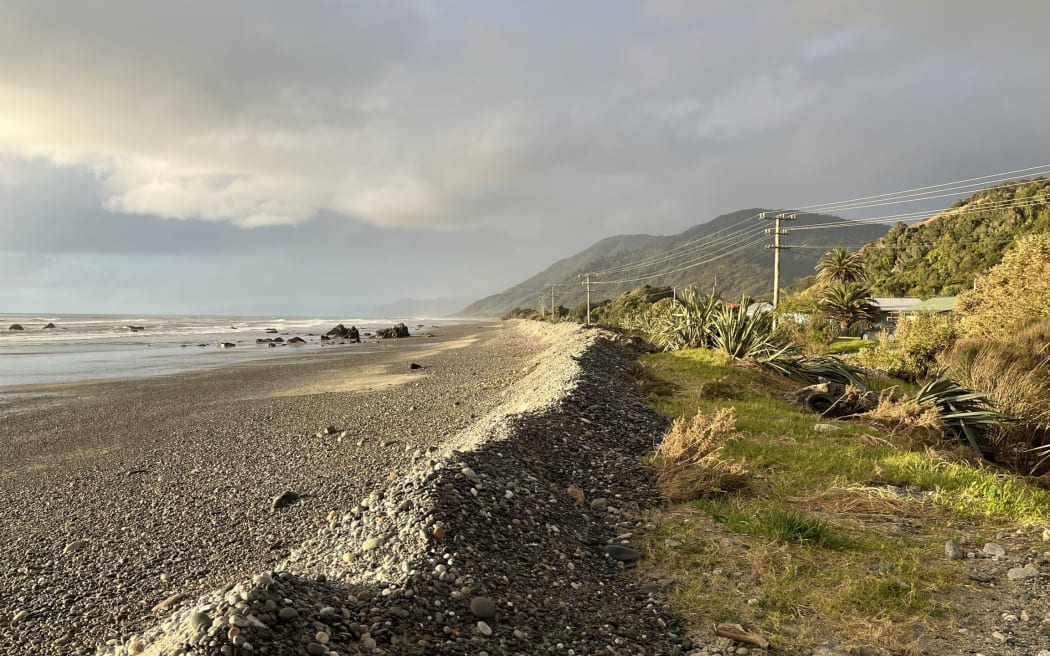
Protection of the Granity-Ngakawau foreshore in northern Buller remains up in the air in lieu of no funding for permanent sea protection or a rating district, with residents relying on a temporary bund (pictured), after several recent ocean surges. Photo: LDR / Greymouth Star/Brendon McMahon
Chairman Allan Birchfield said the council had a $500,000 excess, "so we have to think about it".
Brett Cummings said there was thought nationally that it was better to "let the rivers run" but he recognised that would have a severe economic impact.
Peter Ewen said letting rivers go might be current in some quarters but how would Christchurch like it if "we do that with the Waimakariri?"
Andy Campbell said it was time the council pushed for a return to the previous one-on-one government subsidy, as when catchment boards proactively 'managed' river training.
"That's what was done 50 years ago. Now we seem to wait for a big disaster, which costs millions."
South Westland alone had at least 20 rivers threatening communities and livelihoods that needed addressing.
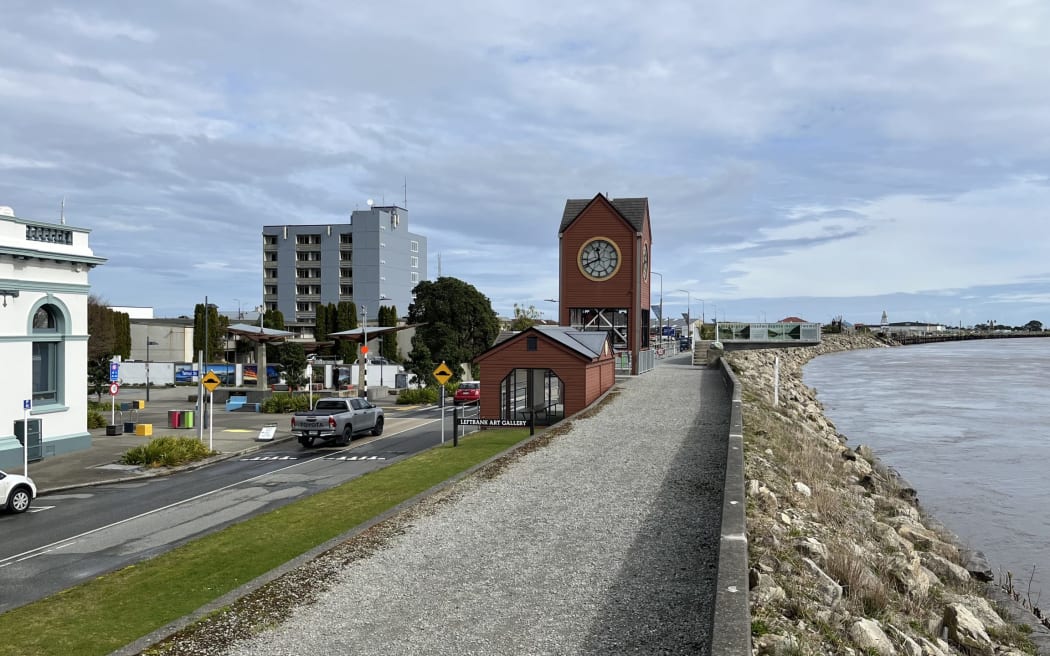
The current Greymouth floodwall is due to be raised via combination of 'shovel ready' funding and ratepayer input. Photo: LDR / Greymouth Star/Brendon McMahon
Mark McIntyre said he did catchment board work in his younger days and "it was all maintenance" with floods then not generating the damage being seen.
The imminent threat of the Wanganui River at Hari Hari was being stymied by some landowners not wanting to pay for protection, Campbell said.
There was also a lag in appreciation of the risk to the nearby SH6 by the appropriate authority.
"They would much rather leave it until it hits the road and then say, what do we do now?"
Dooley said the big issue came back to what the council's role was.
"We have an obligation to maintain."
However, he also noted the Crown had assets in the region threatened by rivers, with an onus on them to contribute "as they don't pay rates".
"There is no co-investment. Everything is imposed on ratepayers," Dooley said.
Birchfield said a lot of the problem was also linked to slip and erosion material coming out of the DOC estate into waterways, "and landing on private land, and these people are paying the bill".
The council heard that staff were working on a new government funding round to "front foot" likely projects, however Dooley said there was no reason why the council should not be making submissions to the government now.
Local Democracy Reporting is Public Interest Journalism funded through NZ On Air

